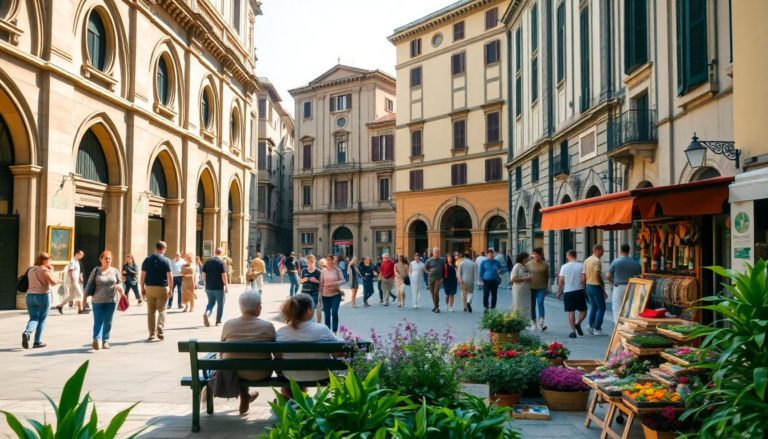Argomenti trattati
Imagine strolling through the historic streets of Florence, Milan, Naples, Rome, and Venice, but without the usual crowds pushing past you. This is the vision behind the recently launched GDITS initiative, spearheaded by Italy’s Minister of Tourism, Daniela Santanchè. The project aims to create a new model of sustainable tourism that not only respects the rich heritage of these cities but also enriches the experience for visitors and locals alike. It’s not just a lofty dream—this initiative comes with a solid financial backing of six million euros, evenly distributed among the participating cities.
The GDITS initiative explained
The GDITS, or Grandi Destinazioni Italiane per un Turismo Sostenibile (Great Italian Destinations for Sustainable Tourism), zeroes in on the pressing issue of overtourism that plagues many historic cities. As we know, these cities attract millions of visitors each year, often leading to overcrowding and strain on local resources. The initiative aims to alleviate this pressure by promoting alternative itineraries and engaging local communities in tourism planning. It’s about crafting a tourism experience that’s not just enjoyable but sustainable—because who doesn’t want to bask in the beauty of Venice without elbowing someone for a photo?
City-by-city initiatives
Each city has tailored its approach under the GDITS umbrella, focusing on its unique challenges and opportunities. Let’s dive into what they’re doing:
Milan: Embracing culture and innovation
With the project “Let Mi… Promote and Experience Milan,” the city aims to spotlight its cultural dynamism—think art, design, and performances. By leveraging digital tools and tech innovations, Milan is striving to create a tourism experience that’s less intrusive and more respectful of its urban fabric. I remember visiting Milan a few years back, and while the Duomo was breathtaking, the sheer number of tourists made it hard to truly appreciate its beauty. This initiative is a refreshing shift towards a more balanced approach.
Venice: Respectful tourism
Known for its stunning canals, Venice has long been a poster child for overtourism. In response, the city has launched the “#EnjoyRespectVenezia” campaign, aiming to educate visitors on respectful behavior while also guiding them away from fragile areas. It’s a smart move—who wouldn’t want to enjoy Venice without feeling like they’re trapped in a sardine can? The message is clear: cherish the beauty of Venice but do it with care.
Florence: Engaging the community
Florence takes a leading role in the initiative with its “Enjoy, Respect & Feel Florence” project. This initiative emphasizes community engagement and promotes lesser-known itineraries linked to cinema and sports. I recall my own visit where I found hidden gems in the Oltrarno district that tourists often overlook. Florence’s approach is about sharing these treasures and creating a more inclusive tourism model, which can only enhance the overall experience.
Rome: Unexpected itineraries
Rome surprises with its “Unexpected Itineraries of Rome” program, which seeks to unveil the city’s hidden layers. Gone are the days of following the same beaten paths to the Colosseum and Vatican. Instead, visitors are encouraged to explore off-the-beaten-track locations, revealing a side of Rome that’s often missed. It’s about crafting a more contemporary experience, one that resonates with those looking for authenticity rather than the mainstream.
Napoli: Tech meets tradition
Naples is bringing a modern twist to the table with its “Napoli TouristTech” initiative. This project aims to blend technology with local culture. Imagine sustainable info-points popping up around the city, promoting urban trekking routes and utilizing digital platforms to encourage a more mindful tourism approach. Personally, I’ve always loved the lively streets of Naples, and a focus on sustainable tourism could maintain that vibrant energy while ensuring it’s enjoyed responsibly.
A sustainable future for Italian tourism
Minister Santanchè is firmly committed to the GDITS initiative, viewing sustainability as a cornerstone for future development in tourism. This project could pave the way for a replicable model in other Italian cities, emphasizing that tourism can thrive without compromising the essence of what makes these places special. And as many know, the balance between tourism and preservation is delicate. It’s crucial not just for today’s travelers but for future generations who deserve to experience these wonders.
In the end, it’s about creating memories that last—not just for visitors but for the locals who call these cities home. I can’t help but feel excited about the possibilities that lie ahead. Could this be the dawn of a new era in tourism? Only time will tell, but for now, let’s embrace the journey and explore responsibly.

